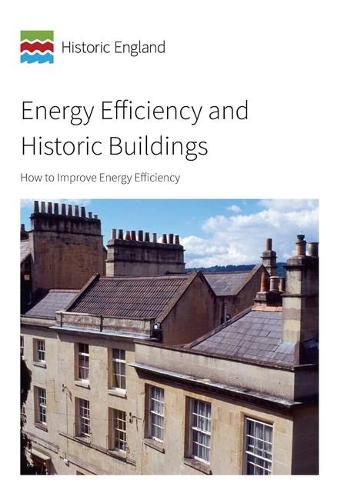Readings Newsletter
Become a Readings Member to make your shopping experience even easier.
Sign in or sign up for free!
You’re not far away from qualifying for FREE standard shipping within Australia
You’ve qualified for FREE standard shipping within Australia
The cart is loading…






This guidance is for anyone who wishes to improve energy efficiency in an historic building. There are many reasons to do this. Improving energy efficiency will lower carbon emissions and fuel bills and often increase comfort. It also might be necessary to ensure that a building complies with legal requirements. More broadly, improving energy efficiency forms a part of the wider objective to achieve a sustainable environment.
It is a widely held view that older buildings are not energy-efficient, and must be radically upgraded in order to improve their performance. In reality, the situation is more complicated, and assumptions about poor performance are not always justified. Even so, the energy and carbon performance of most historic buildings can be improved, which will help them remain viable and useful, now and in the future. But striking the right balance between benefit and harm is not easy. The unintended consequences of getting energy efficiency measures wrong (or doing them badly) include: harm to heritage values and significance, harm to human health and building fabric, and failure to achieve the predicted savings or reductions in environmental impact.
Getting the balance right (and avoiding unintended consequences) is best done with a holistic approach that uses an understanding of a building, its context, its significance, and all the factors affecting energy use as the starting point for devising an energy-efficiency strategy. This 'whole building approach' ensures that energy-efficiency measures are suitable, robust, well integrated, properly coordinated and sustainable. In addition, this approach provides an effective framework for communication and understanding between the various parties involved in the process. These include assessors, designers, installers and the people who occupy and manage the building.
A logical and systematic process of energy planning underpins the 'whole building approach'. This guidance describes the key stages of the process, illuminating any problems that might occur and providing solutions. It also includes checklists of practical measures that might be considered, along with links to sources of more detailed information about how to install these measures.
$9.00 standard shipping within Australia
FREE standard shipping within Australia for orders over $100.00
Express & International shipping calculated at checkout
This guidance is for anyone who wishes to improve energy efficiency in an historic building. There are many reasons to do this. Improving energy efficiency will lower carbon emissions and fuel bills and often increase comfort. It also might be necessary to ensure that a building complies with legal requirements. More broadly, improving energy efficiency forms a part of the wider objective to achieve a sustainable environment.
It is a widely held view that older buildings are not energy-efficient, and must be radically upgraded in order to improve their performance. In reality, the situation is more complicated, and assumptions about poor performance are not always justified. Even so, the energy and carbon performance of most historic buildings can be improved, which will help them remain viable and useful, now and in the future. But striking the right balance between benefit and harm is not easy. The unintended consequences of getting energy efficiency measures wrong (or doing them badly) include: harm to heritage values and significance, harm to human health and building fabric, and failure to achieve the predicted savings or reductions in environmental impact.
Getting the balance right (and avoiding unintended consequences) is best done with a holistic approach that uses an understanding of a building, its context, its significance, and all the factors affecting energy use as the starting point for devising an energy-efficiency strategy. This 'whole building approach' ensures that energy-efficiency measures are suitable, robust, well integrated, properly coordinated and sustainable. In addition, this approach provides an effective framework for communication and understanding between the various parties involved in the process. These include assessors, designers, installers and the people who occupy and manage the building.
A logical and systematic process of energy planning underpins the 'whole building approach'. This guidance describes the key stages of the process, illuminating any problems that might occur and providing solutions. It also includes checklists of practical measures that might be considered, along with links to sources of more detailed information about how to install these measures.